In the realm of skincare, one of the most common concerns among adults—especially those over the age of 30—is the appearance of dark spots on the face, hands, and other sun-exposed areas. These spots, often called sun spots, liver spots, or age spots, are not just a cosmetic nuisance. For many, they serve as a visual reminder of cumulative sun exposure, hormonal fluctuations, or even environmental stressors. As interest in natural health continues to rise, many people are actively searching for evidence-based, non-invasive solutions to improve the appearance of their skin. Understanding how to remove sun spots and age spots naturally isn’t just about vanity; it’s about reclaiming healthy skin in a way that is both safe and scientifically grounded.
You may also like: How to Choose Skin Care for Fine Lines: Evidence-Based Tips for Healthier, Younger-Looking Skin
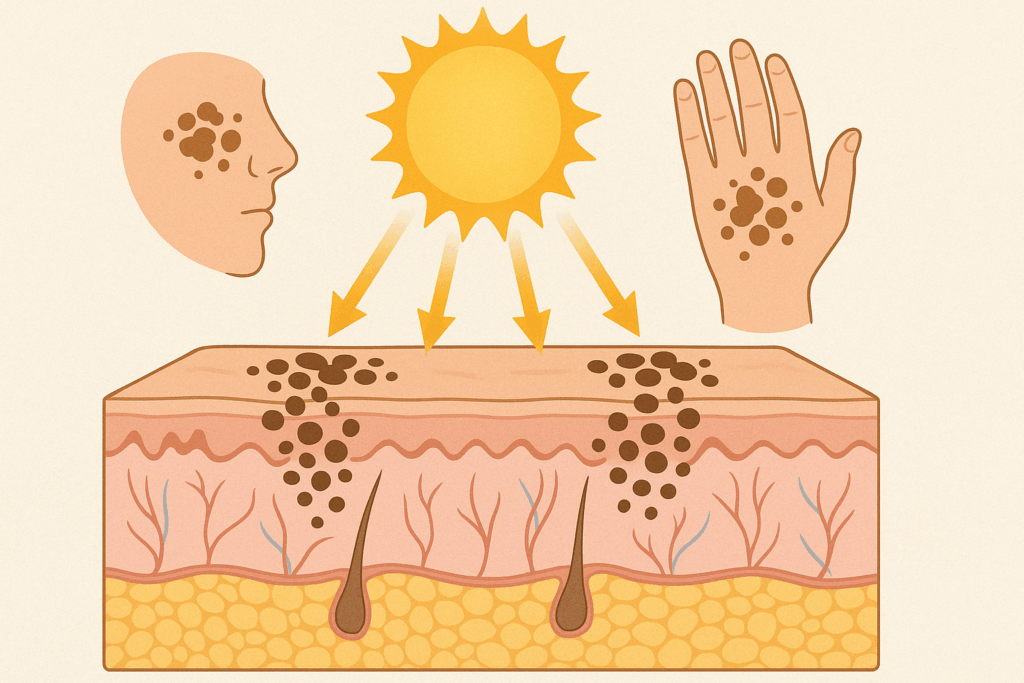
Understanding the Formation of Sun Spots and Age Spots
Before diving into natural remedies and treatments, it’s essential to understand what causes liver spots, sun spots, and age spots in the first place. Medically referred to as solar lentigines, these pigmented patches result from prolonged exposure to ultraviolet (UV) light. Over time, the skin produces excess melanin as a protective response, which can cluster in areas frequently exposed to the sun, such as the face, shoulders, chest, and backs of the hands. This hyperpigmentation process becomes more pronounced with age, hence the term “age spots.”
In addition to UV exposure, genetic predisposition and hormonal changes—such as those that occur during pregnancy or with the use of oral contraceptives—can influence the likelihood of developing dark spots. Oxidative stress, often linked to poor diet or environmental pollution, also plays a role in accelerating melanocyte activity, further contributing to uneven skin tone. Recognizing these multifaceted causes underscores the importance of a comprehensive approach to treatment, one that addresses both internal and external triggers.
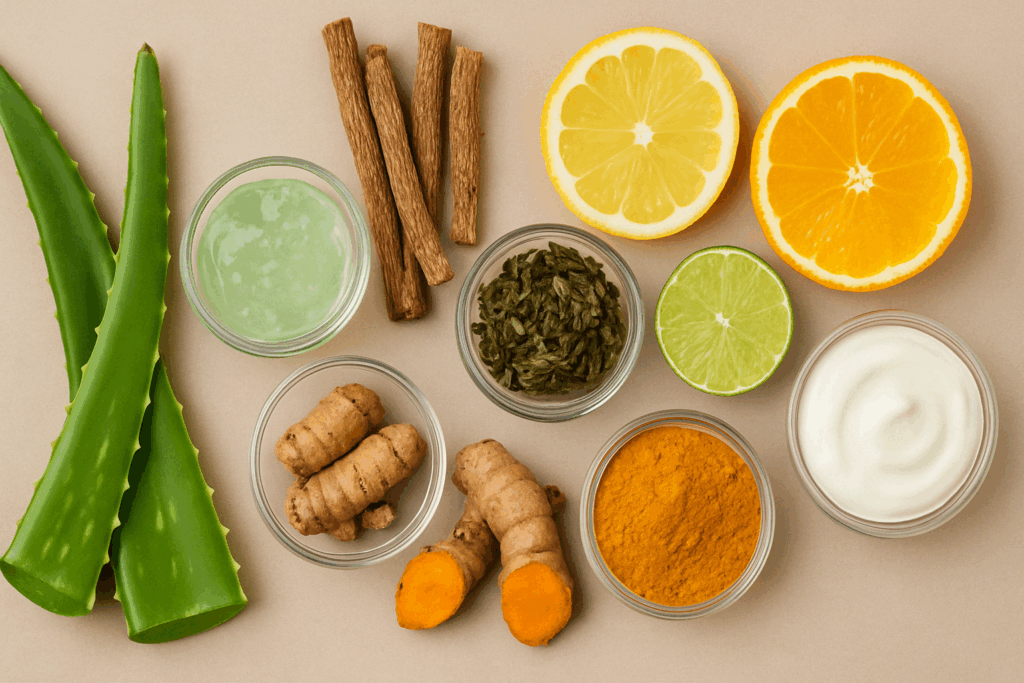
How to Remove Sun Spots Naturally: Topical Treatments that Work
For those who prefer a natural route, topical remedies can be a promising first step in the journey to clear skin. One of the most widely recommended natural ingredients is aloe vera, known for its soothing, anti-inflammatory, and melanin-inhibiting properties. Regular application of fresh aloe vera gel directly to the affected areas has been shown to lighten dark spots on the face and hands over time. The active compound aloin helps inhibit tyrosinase, an enzyme responsible for melanin production.
Green tea extract is another powerful remedy that offers antioxidant benefits while gently reducing hyperpigmentation. Applied topically, green tea polyphenols can decrease oxidative stress and prevent melanin overproduction. Likewise, licorice root extract contains glabridin, a compound that has been studied for its skin-lightening effects and its ability to reduce redness and pigmentation without irritating sensitive skin.
Vitamin C serums, derived from citrus fruits or stabilized as ascorbic acid, are often cited as among the best dark spot removers for the face. Vitamin C not only reduces melanin synthesis but also improves collagen production, helping the skin appear firmer and more radiant. Turmeric paste, made by combining turmeric powder with honey or yogurt, can also be used to treat liver spots on the face due to its anti-inflammatory and antioxidant activity. Each of these treatments offers a natural way to remove sunspots on the face without harsh chemicals or clinical intervention.
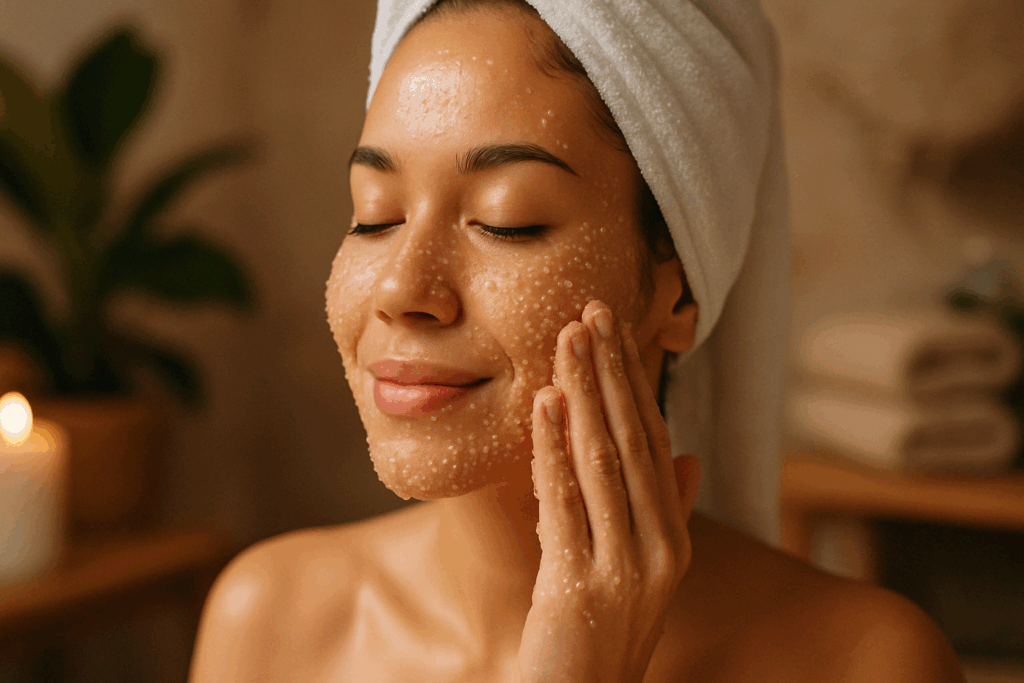
The Role of Exfoliation in Fading Age Spots
Exfoliation is a crucial, often overlooked, component of dark spot treatment. Regular exfoliation helps slough off dead skin cells that can trap excess melanin and cause uneven pigmentation. When combined with natural remedies, exfoliation can accelerate the process of reducing the appearance of sun spots and liver spots on the hands and face.
Natural exfoliants such as ground oats, rice flour, or sugar scrubs blended with honey or milk can be used weekly to gently remove surface-level pigment. Alpha hydroxy acids (AHAs), like lactic acid and glycolic acid derived from fruit and milk sources, can also be found in natural formulations and are effective for promoting cell turnover. The result is fresher, brighter skin that allows dark spot treatments to penetrate more effectively.
Importantly, over-exfoliation should be avoided, as it can lead to irritation or even worsen hyperpigmentation in sensitive skin types. Therefore, a balanced approach—one that integrates exfoliation with nourishing topical agents—is key for those exploring how to eliminate age spots naturally. This synergy enhances efficacy while supporting the skin’s natural barrier function.
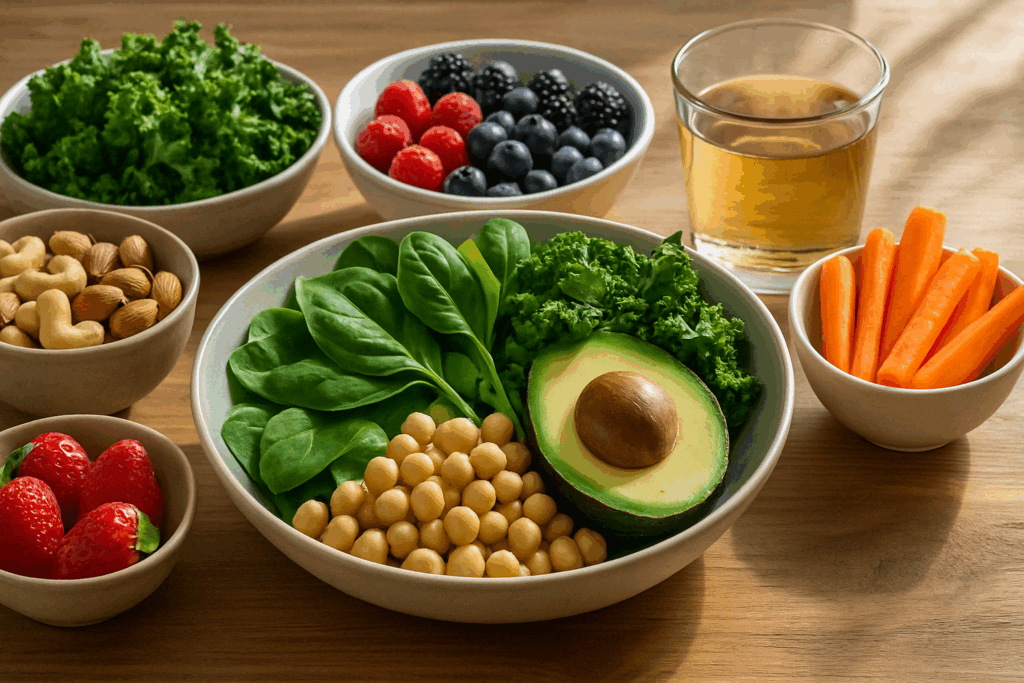
How Diet and Lifestyle Affect Dark Spot Formation
Treating dark spots from the outside is only part of the solution. Internal factors, including nutrition, hydration, and overall health, play a profound role in skin clarity. A diet rich in antioxidants—such as vitamin E, vitamin C, beta-carotene, and polyphenols—can help neutralize free radicals that exacerbate skin aging and pigmentation. Foods like berries, leafy greens, carrots, nuts, and seeds should be consumed regularly to promote skin repair and resilience.
Hydration also plays a vital role in maintaining skin health. Well-hydrated skin is more elastic, less prone to damage, and better able to recover from environmental stressors. In addition, minimizing alcohol and processed sugar intake can support hormonal balance and reduce inflammation, both of which are linked to dark spot formation.
Lifestyle modifications such as managing stress, getting adequate sleep, and engaging in regular exercise also influence skin appearance. Chronic stress, for instance, triggers cortisol production, which can indirectly increase pigmentation. Similarly, lack of sleep impairs the skin’s regenerative process, slowing the natural fading of age spots. Understanding these internal contributors allows for a more holistic and sustainable dark spot treatment strategy.
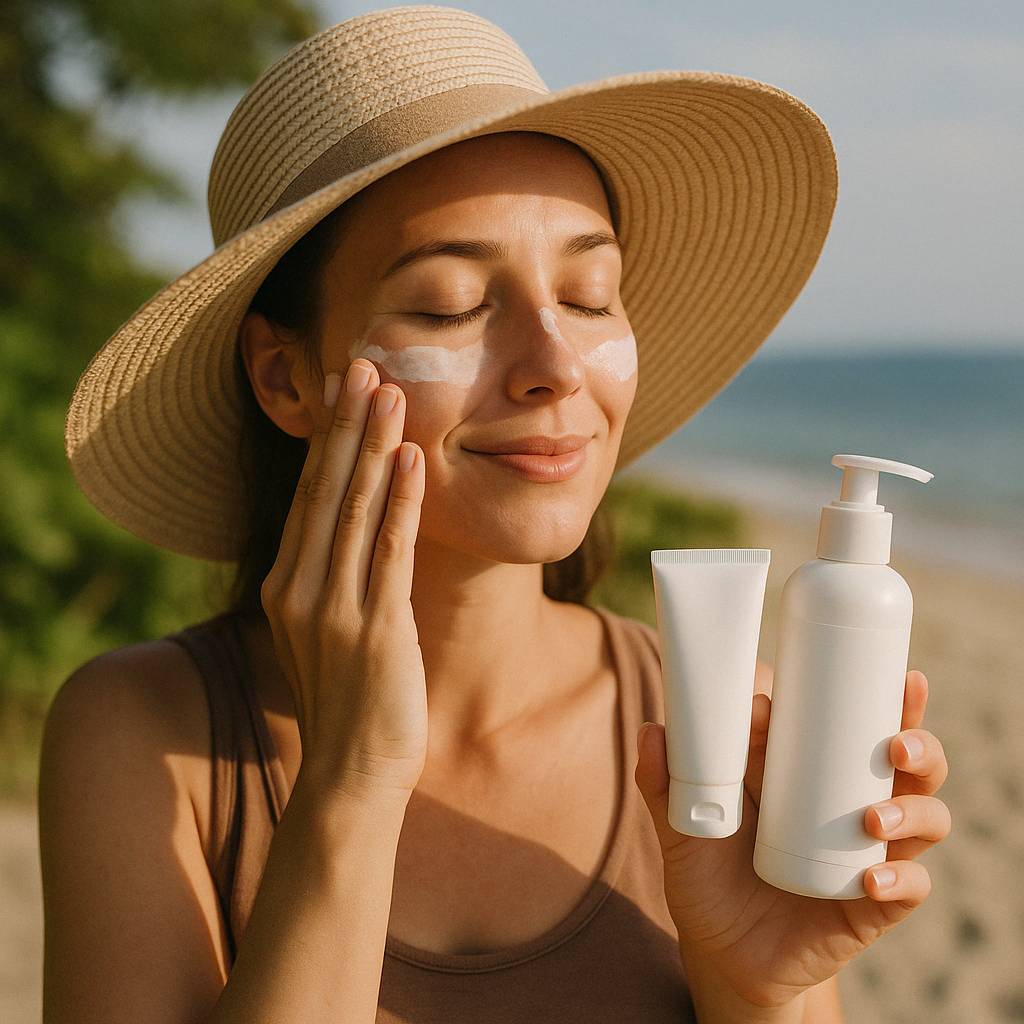
Sun Protection: The Foundation of Prevention and Treatment
No dark spot treatment regimen is complete without diligent sun protection. Ultraviolet radiation not only causes new sunspots to form but also darkens existing ones, making them more difficult to treat. Wearing a broad-spectrum sunscreen with an SPF of at least 30 every day—even during cloudy weather or while indoors near windows—is essential for those who want to remove sun spots on the face and prevent their recurrence.
Zinc oxide and titanium dioxide-based mineral sunscreens are particularly beneficial for sensitive skin and offer immediate, non-irritating protection. Hats, sunglasses, and UV-protective clothing also contribute to comprehensive sun safety. Those with darker skin tones should not overlook sun protection, as hyperpigmentation tends to be more pronounced and longer-lasting in melanin-rich complexions.
Using sunscreen in conjunction with natural age spot removers can significantly improve results. Without sun protection, even the best cream for dark spots on the face will have limited effectiveness. Sun care, therefore, is not just a preventative measure but a critical component of any plan aimed at reducing existing pigmentation.
How to Get Rid of Dark Spots on Face with Natural Ingredients
While many over-the-counter products promise to be the best dark spot remover for face and hands, some of the most effective ingredients are found in the natural world. Apple cider vinegar, for example, contains acetic acid, which has mild exfoliating and lightening properties. When diluted and applied with a cotton ball to darkened areas, it may help fade discoloration over time.
Onion juice, though less commonly used due to its pungent odor, has been studied for its ability to inhibit melanocyte activity and reduce the appearance of liver spots on the face. Papaya enzymes, especially papain, gently break down dead skin cells and promote new cell growth, making papaya masks a gentle remedy for dark spots. Even yogurt, with its natural lactic acid content, can be applied topically to brighten and soothe uneven skin tone.
These simple, plant-based options are appealing for those looking to avoid harsh chemicals and artificial additives. When combined with a consistent skincare routine and sun protection, they offer a practical and affordable way to get rid of dark spots on the face while supporting overall skin wellness.
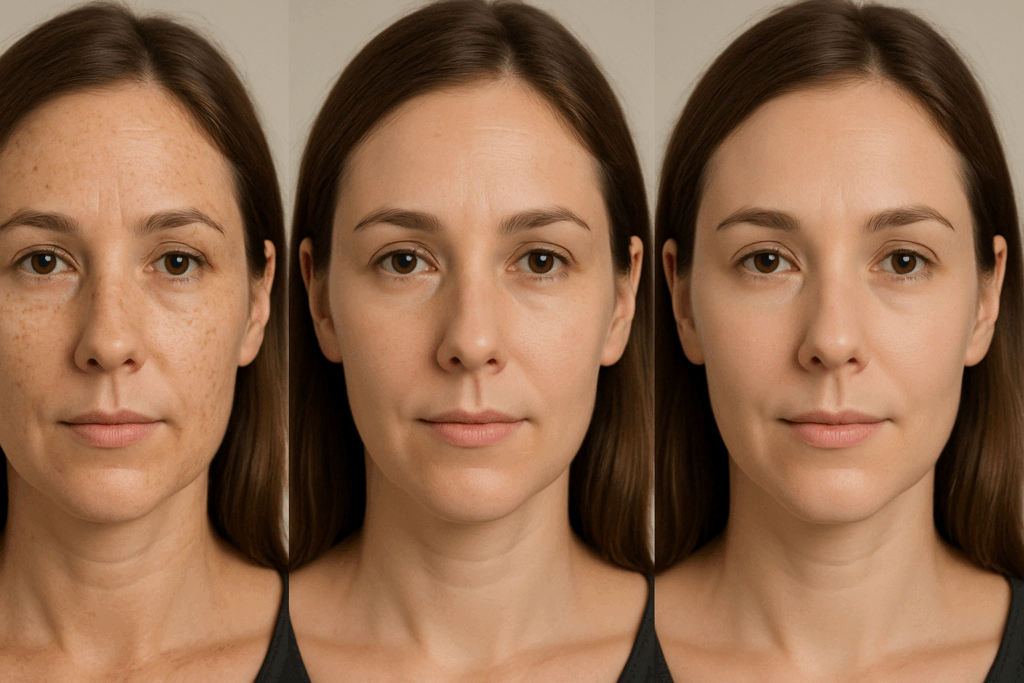
How to Remove Age Spots Naturally: The Importance of Consistency
One of the biggest challenges in dark spot treatment is maintaining consistency over time. Natural remedies often work more gradually than prescription treatments, and noticeable results may take several weeks or even months. However, this slow and steady approach is often safer, especially for those with sensitive or reactive skin.
Tracking progress through photos or a skincare journal can help maintain motivation. It’s also useful to rotate different treatments every few weeks to avoid plateaus and optimize the skin’s response. For example, alternating between vitamin C serum, turmeric paste, and aloe vera gel may offer synergistic effects while minimizing irritation.
Those wondering how to rid black spots on face and hands should not expect overnight transformations. Rather, the goal should be gradual fading, improved skin texture, and reduced recurrence. By focusing on long-term skin health instead of quick fixes, individuals are more likely to see lasting improvement in the appearance of sunspots, liver spots, and other forms of hyperpigmentation.
When to Consider Professional Advice from Liver Spot Specialists
Although natural treatments are effective for many, there are situations where consultation with a dermatologist or liver spot specialist may be warranted. If dark spots change in shape, size, or color, they should be evaluated to rule out skin cancer or other underlying conditions. Likewise, if natural remedies fail to produce results after consistent use, it may be time to explore clinical options.
Professionals can offer treatments such as cryotherapy, laser therapy, chemical peels, and microdermabrasion—each with its own set of risks and benefits. These interventions can provide more rapid results, particularly for those dealing with deeply embedded pigmentation or resistant age spots. However, they should be approached with care and ideally used as a complement to, not a replacement for, holistic skin maintenance.
A dermatologist can also recommend the best procedure for brown spots on face based on skin type, history, and individual goals. This personalized approach ensures safety while optimizing outcomes. Combining professional guidance with a foundation of natural self-care offers the most comprehensive path to clearer skin.
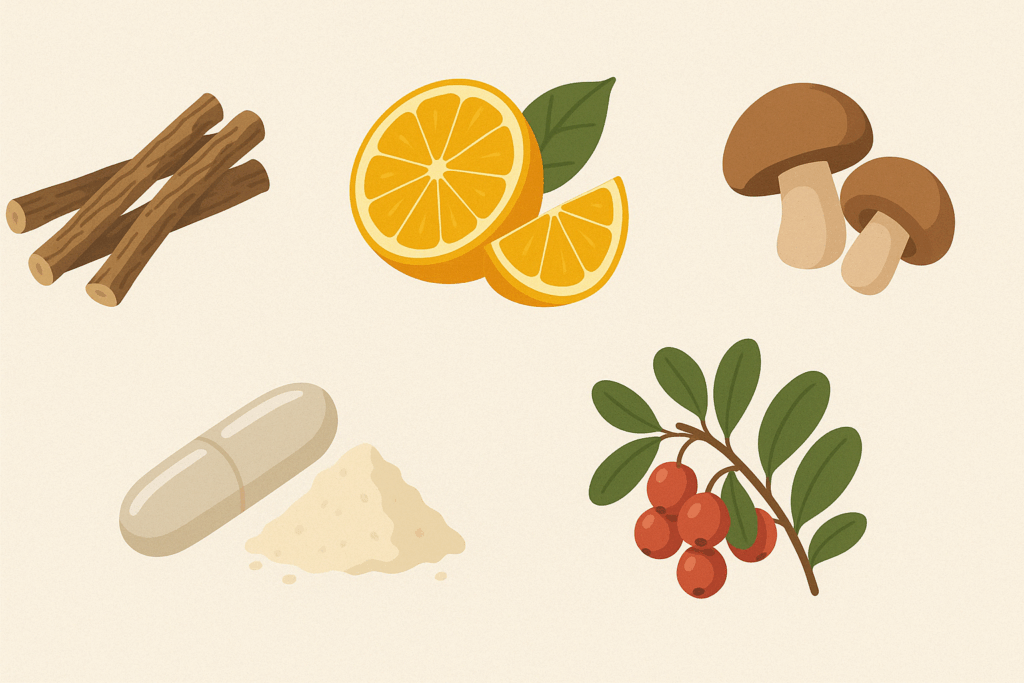
Best Cream for Dark Spots on Face: What to Look For in Natural Formulations
Choosing the best dark spot remover isn’t always straightforward. The skincare market is saturated with options, many of which contain synthetic ingredients that may cause irritation or offer limited results. For those committed to natural approaches, it’s important to scrutinize ingredient lists for proven, plant-based actives such as licorice root, niacinamide, kojic acid (from mushrooms), and bearberry extract.
Formulations that combine exfoliants with antioxidants and melanin inhibitors tend to be the most effective. For example, a cream that includes glycolic acid, vitamin C, and botanical extracts may serve as both a dark spot treatment and a skin-renewing moisturizer. Consumers should be wary of added fragrances, parabens, and other potential allergens, especially when treating sensitive areas like the face.
Ultimately, the best cream for dark spots on face will support skin barrier function, promote gentle turnover, and inhibit further melanin production without causing dryness or inflammation. Transparency in labeling, ethical sourcing, and dermatological testing further enhance the credibility and efficacy of a product.
How to Take Away Sunspots Safely and Sustainably
Removing sunspots safely means adopting a patient, multifaceted strategy rooted in skin physiology and supported by scientific evidence. Those exploring how to remove sunspots on face or how to get rid of sunspots altogether should focus on gentle, gradual methods that preserve the integrity of the skin. This means avoiding aggressive bleaching agents and opting instead for natural compounds that align with the body’s natural healing processes.
Sustainability in skincare also involves considering the long-term impact of treatments. Ingredients that are biodegradable, non-toxic, and ethically sourced not only protect the skin but also contribute to environmental well-being. Brands that emphasize minimal packaging and eco-conscious production methods further align with a holistic approach to health.
By adopting practices that prioritize both personal and planetary health, individuals can treat dark spots in a way that is consistent with broader wellness values. The journey to clearer skin becomes not only an aesthetic pursuit but a reflection of one’s deeper commitment to integrity, balance, and sustainability.
Frequently Asked Questions: How to Remove Sun Spots and Age Spots Naturally
1. What are the most promising new ingredients in natural dark spot treatments?
Emerging natural ingredients in dark spot treatment include bakuchiol, a plant-based alternative to retinol that has shown potential in reducing liver spots on the face without the irritation associated with conventional retinoids. Another promising compound is azelaic acid derived from grains, which not only helps how to get rid of dark spots on face but also targets acne-related pigmentation. Mulberry extract, rich in resveratrol, is gaining traction for its ability to disrupt melanin synthesis. These innovative botanicals provide effective alternatives for those who want to remove sun spots on face using naturally derived actives. As consumers seek cleaner skincare options, these ingredients may become essential for those researching how to remove sun spots safely and effectively.
2. Can hormonal imbalances contribute to sun spots or liver spots?
Yes, hormonal imbalances—particularly fluctuations in estrogen and progesterone—can exacerbate pigmentation issues, especially during pregnancy or perimenopause. While UV exposure remains a primary cause, hormones can increase the skin’s sensitivity to sunlight, leading to more prominent liver spots on hands and face. Managing hormone levels through diet, stress reduction, and medical consultation can support natural efforts to eliminate age spots. Understanding the hormonal component provides deeper insight into how to clear dark spots on face and prevent them from worsening. In some cases, addressing hormonal imbalances may prove just as critical as topical treatments in a comprehensive dark spot treatment plan.
3. Are there psychological benefits to treating age spots naturally?
Absolutely. Choosing to treat age spots naturally can empower individuals by giving them more control over their health routines. Unlike invasive procedures, natural treatments require daily commitment, fostering a mindful approach to self-care. Many people report improved self-esteem and body image when they begin to see progress, particularly when using a gentle age spot remover aligned with their values. The consistency involved in natural remedies can also enhance routines that promote calm and reduce anxiety, supporting overall mental well-being. Thus, knowing how to remove age spots naturally isn’t just a skincare decision—it’s a psychologically affirming choice for many.
4. How can I assess whether a natural product qualifies as the best dark spot remover for face?
A high-quality product should list active botanical ingredients with proven efficacy in published dermatological research. The best dark spot remover will also avoid synthetic fragrances, parabens, and alcohols that may inflame sensitive areas, especially when applied to dark spots on the face. Clinical testing, transparent sourcing, and visible ingredient percentages are strong indicators of a product’s legitimacy. You should also look for products that include protective antioxidants, as these not only treat but also prevent new pigmentation from forming. Understanding these criteria is key for anyone exploring how to remove sun spots or seeking the best cream for dark spots on face.
5. What role does gut health play in the development or fading of age spots?
Recent research in integrative dermatology points to a significant connection between gut health and skin clarity. Imbalances in gut flora can lead to systemic inflammation, which may aggravate hyperpigmentation and slow the fading of liver spots on face. Probiotics and prebiotics, found in fermented foods and fiber-rich diets, help restore gut integrity and improve skin healing responses. Those wondering how to get rid of dark spots on face naturally should consider gut-friendly diets as an adjunctive approach. While not a standalone remedy, optimizing gut health supports the body’s ability to clear dark spots and reduce oxidative stress.
6. How can I safely layer multiple natural treatments in my skincare routine?
Layering treatments like vitamin C serum, turmeric masks, and exfoliants can be effective, but it requires balance to prevent skin irritation. Begin with one treatment at a time, allowing your skin to adjust before adding another, and alternate actives to avoid overexposure. For example, use a gentle exfoliant on alternate days, while applying a brightening serum in the morning and a nourishing mask at night. This approach is particularly helpful for those exploring how to get rid of sunspots on face while avoiding harsh chemical reactions. By thoughtfully layering products, you maximize results while maintaining skin integrity—essential for long-term success in any dark spot treatment routine.
7. Are there seasonal considerations when planning to remove sunspots or liver spots?
Yes, seasonal changes can significantly influence both the formation and treatment of pigmentation. Fall and winter are ideal times for most dark spot treatments, as reduced UV exposure allows the skin to heal more efficiently and decreases the risk of rebound pigmentation. In contrast, treating liver spots on hands or face during summer requires heightened sun protection due to increased UV intensity. Adjusting your regimen with the seasons ensures a safer and more effective process for how to remove dark spots on face and body. Awareness of seasonal dynamics is especially relevant for choosing the best procedure for brown spots on face.
8. What innovations in non-invasive therapies are being explored by liver spot specialists?
Beyond traditional laser treatments and peels, newer non-invasive therapies are emerging, including LED light therapy and microneedling with botanical serums. These options stimulate collagen and enhance the delivery of natural actives, helping to reduce liver spots without extended downtime. Specialists are also exploring ultrasound-based techniques to enhance dermal penetration of age spot remover formulations. These innovations reflect a growing demand for treatments that blend efficacy with minimal side effects. For those who’ve struggled with how to remove sunspots or dark patches that resist home care, consulting liver spot specialists about these techniques can offer valuable alternatives.
9. Is there a difference between how to remove sunspots and how to rid black spots on face caused by acne or injury?
Yes, while both are forms of hyperpigmentation, sunspots and post-inflammatory hyperpigmentation (PIH) often respond to different treatments. Sunspots, caused by UV exposure, are deeper and more persistent, often requiring exfoliants and melanin inhibitors. In contrast, black spots from acne or cuts may respond faster to anti-inflammatory and skin-repairing agents like niacinamide or panthenol. Understanding the origin of your pigmentation helps determine the best approach for how to clear dark spots on face effectively. Tailoring your treatment improves outcomes and ensures the safest path to brighter, healthier skin.
10. What lifestyle habits accelerate the recurrence of age spots even after successful removal?
Several habits can lead to the rapid return of sunspots and age spots, even after effective removal. Unprotected sun exposure remains the primary culprit, especially when sunscreen is not used consistently. Additionally, smoking, excessive alcohol intake, and sleep deprivation all contribute to oxidative stress that accelerates skin aging. Skipping follow-up care after using the best dark spot remover for face—such as neglecting hydration or failing to support the skin barrier—can also undermine long-term results. Maintaining healthy skin requires ongoing care and awareness of these contributing factors, especially when the goal is to eliminate age spots naturally and sustainably.
Conclusion: How to Clear Dark Spots on Face Naturally and Effectively
Achieving radiant, even-toned skin doesn’t require harsh chemicals or invasive procedures. For those committed to wellness from the inside out, learning how to clear dark spots on face naturally is both a practical and empowering journey. Through consistent application of topical remedies like vitamin C, aloe vera, and turmeric, combined with exfoliation, sun protection, and healthy lifestyle choices, it’s possible to dramatically reduce the appearance of sun spots, age spots, and liver spots on the face and hands.
Integrating a nutrient-rich diet, managing stress, and consulting with liver spot specialists when needed ensures a balanced approach to skincare that respects the body’s natural rhythms. By focusing on prevention as well as treatment, individuals can enjoy lasting results without compromising health or comfort. The best dark spot remover is often the one that works in harmony with your skin’s biology, offering results that are not only visible but sustainable. For those asking how to get rid of dark spots on face, the answer lies not in quick fixes, but in thoughtful, informed, and nurturing care.
Was this article helpful? Don’t let it stop with you. Share it right now with someone who needs to see it—whether it’s a friend, a colleague, or your whole network. And if staying ahead on this topic matters to you, subscribe to this publication for the most up-to-date information. You’ll get the latest insights delivered straight to you—no searching, no missing out.
Further Reading:
Removing Sunspots on Face: Treatment and At-Home
Age spots (liver spots) – Diagnosis & treatment
Skin care for aging skin: Minimizing age spots, wrinkles, and undereye bags
Disclaimer
The information contained in this article is provided for general informational purposes only and is not intended to serve as medical, legal, or professional advice. While Health11News strives to present accurate, up-to-date, and reliable content, no warranty or guarantee, expressed or implied, is made regarding the completeness, accuracy, or adequacy of the information provided. Readers are strongly advised to seek the guidance of a qualified healthcare provider or other relevant professionals before acting on any information contained in this article. Health11News, its authors, editors, and contributors expressly disclaim any liability for any damages, losses, or consequences arising directly or indirectly from the use, interpretation, or reliance on any information presented herein. The views and opinions expressed in this article are those of the author(s) and do not necessarily reflect the official policies or positions of Health11News.